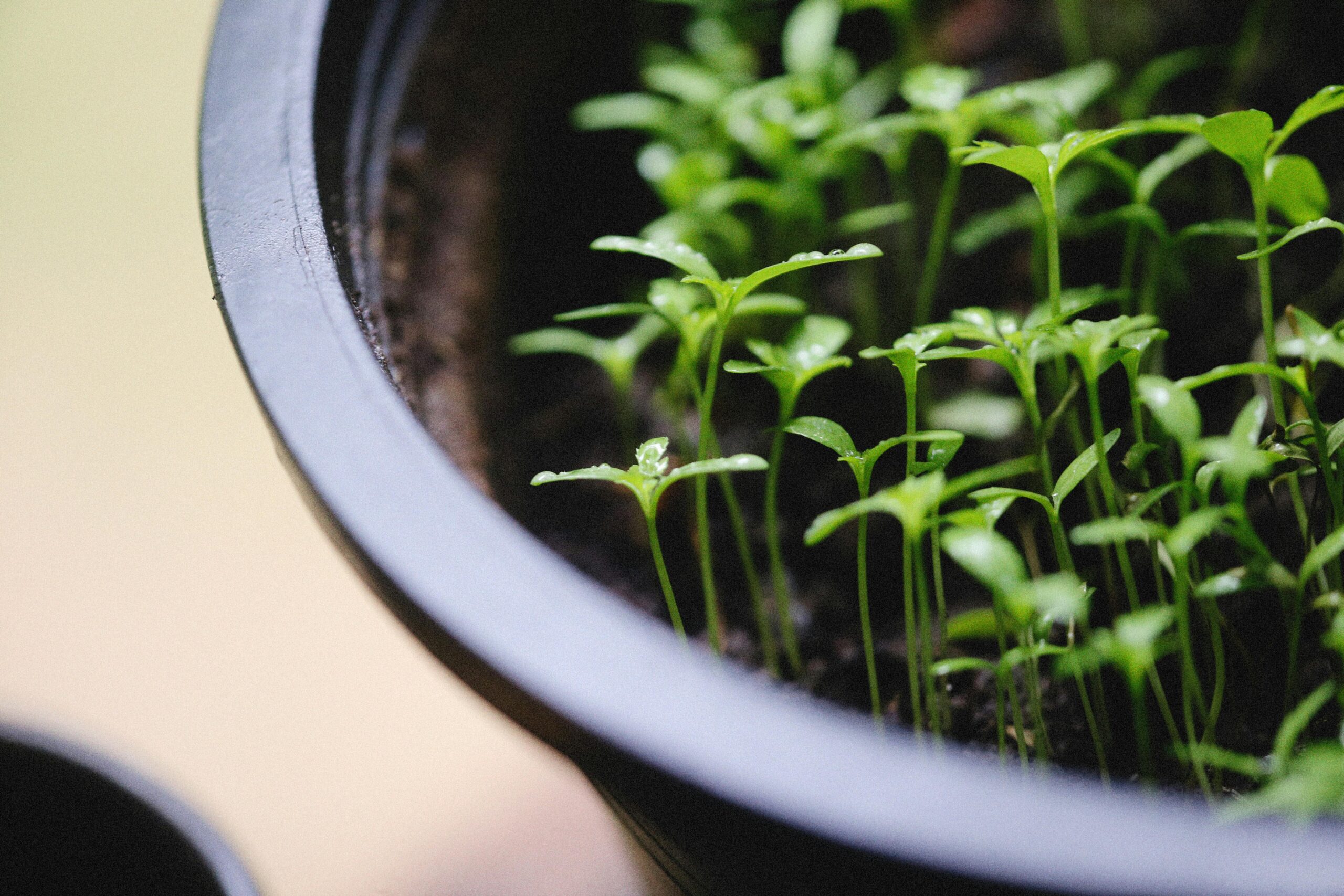Welcome to our informative blog post on seed germination. Whether you’re a seasoned gardener or a novice plant enthusiast, understanding the process of seed germination is essential for successful plant growth. In this comprehensive guide, we will delve into the fascinating world of seeds, exploring the factors that influence germination, and providing practical tips and techniques to maximize your gardening efforts. So, let’s embark on this enlightening journey as we uncover the secrets of seed germination and learn how to nurture our plants from the very beginning.
Factors Affecting Seed Germination
Seed germination is a complex process influenced by various factors. Understanding these factors can significantly improve your success rate in growing healthy plants from seeds. Let’s explore the key elements that impact seed germination:
1. Temperature
Temperature plays a vital role in seed germination. Different plant species have specific temperature requirements for optimal germination. Some seeds thrive in warmer temperatures, while others prefer cooler conditions. To ensure successful germination, it’s essential to provide seeds with the appropriate temperature range. This can be achieved by carefully following the recommended temperature guidelines for each plant variety.
2. Moisture
Moisture is another critical factor that affects seed germination. Adequate moisture levels are necessary to activate enzymes within the seed that initiate the germination process. However, excessive moisture can lead to rot and fungal growth, hampering germination. Striking the right balance is crucial. Ensure that the soil or growing medium is consistently moist but not overly saturated.
3. Light
Light requirements for seed germination vary among plant species. While some seeds require exposure to light to trigger germination, others need darkness. Understanding the light preferences of your seeds will help you provide the ideal conditions for successful germination. Check the seed packaging or do some research to determine whether your seeds require light or darkness.
4. Oxygen
Oxygen availability is crucial for seed germination as it fuels the respiration process. Adequate oxygen levels in the soil allow seeds to respire and obtain the energy required for germination. Proper soil aeration and avoiding waterlogging are essential to ensure sufficient oxygen supply to the seeds.
5. Seed Quality
The quality of the seeds themselves greatly influences germination success. Fresh seeds with high viability and genetic purity have a higher likelihood of germinating successfully. It is advisable to obtain seeds from reputable sources to ensure you are working with high-quality seeds that have been stored and handled correctly.
By understanding and addressing these factors, you can provide optimal conditions for seed germination. Next, we will explore various techniques and tips to help you promote successful germination and nurture your seeds into thriving plants.
Techniques and Tips for Successful Seed Germination
Now that we understand the factors influencing seed germination, let’s explore some practical techniques and tips to maximize your success rate:
1. Scarification
Some seeds have a hard outer coating that inhibits water absorption and germination. Scarification is the process of breaking or weakening this hard coating to allow water penetration. This can be done by gently rubbing the seeds with sandpaper, nicking them with a knife, or soaking them in warm water overnight. Be cautious not to damage the seed embryo while scarifying.
2. Stratification
Stratification involves subjecting certain seeds to a period of cold treatment to simulate natural winter conditions. This process helps break seed dormancy and triggers germination. Place the seeds in a moist medium, such as damp sand or vermiculite, and refrigerate them for the recommended period. After stratification, transfer the seeds to suitable growing conditions.
3. Pre-soaking
Pre-soaking seeds before planting can help jumpstart the germination process. Soak the seeds in room temperature water for a few hours or overnight. This helps soften the seed coat and kick-starts hydration, accelerating germination. Remember to discard any floating seeds as they are unlikely to germinate.
4. Proper Planting Depth
Planting seeds at the correct depth is crucial for successful germination. As a general rule, plant seeds two to three times their diameter deep in the soil. Small seeds should be sown directly on the soil surface and gently pressed in. Planting at the right depth ensures that the seed receives adequate moisture, light, and oxygen for germination.
5. Adequate Watering
Consistent and appropriate watering is essential during the germination process. Ensure that the soil or growing medium remains consistently moist but not waterlogged. Use a fine mist or a watering can with a gentle flow to avoid disturbing the seeds. Watering from the bottom by placing containers in a tray with water can also be effective.
By employing these techniques and following these tips, you can greatly enhance your chances of successful seed germination. Patience, attention to detail, and maintaining optimal conditions will reward you with healthy seedlings ready to embark on their growth journey.
Caring for Germinating Seeds
Once your seeds have germinated and sprouted, it’s important to provide proper care to ensure their healthy growth. Here are some essential tips for caring for germinating seeds:
1. Light and Temperature
As soon as the seeds have sprouted, they will require an appropriate amount of light. Place them in a location where they can receive sufficient light, whether it’s a sunny windowsill or under grow lights. Additionally, maintain an optimal temperature range for the specific plant variety to promote healthy growth and development.
2. Transplanting
When the seedlings have developed their first set of true leaves, it’s time to consider transplanting them into larger containers or into the garden. Carefully lift the seedlings, ensuring you don’t damage the fragile roots, and gently place them into prepared soil or pots. Provide adequate spacing between the seedlings to allow for proper air circulation and growth.
3. Watering and Feeding
Continue to monitor the moisture levels of the soil or growing medium. Water the seedlings as needed to keep the soil consistently moist but not waterlogged. Use a gentle watering technique to avoid dislodging or damaging the delicate seedlings. Additionally, consider feeding the seedlings with a diluted organic fertilizer to provide essential nutrients for healthy development.
4. Thinning Seedlings
If you have planted multiple seeds in one container or area, it’s important to thin out the seedlings to prevent overcrowding. Overcrowding can lead to competition for resources and hinder proper growth. Carefully remove the weaker or excess seedlings, leaving only the healthiest and strongest ones to thrive.
5. Hardening Off
Before transplanting seedlings into the outdoor garden, it’s crucial to gradually expose them to outdoor conditions. This process is known as hardening off and helps acclimate the seedlings to changes in temperature, sunlight, and wind. Begin by placing the seedlings outdoors for a short period each day, gradually increasing the duration over a week or two.
By providing the right care and attention, your germinating seeds will grow into robust and vibrant plants. Remember to observe and adjust your care routine based on the specific needs of each plant variety, and enjoy the rewarding journey of nurturing your own garden from seed to harvest.
Troubleshooting Common Seed Germination Issues
While seed germination is a natural process, it can sometimes encounter obstacles. Here are some common issues that may arise during seed germination and practical solutions to overcome them:
1. Slow or Uneven Germination
If you notice that some seeds are germinating much slower than others or the germination is uneven, it could be due to factors such as improper temperature, inadequate moisture, or poor seed quality. Ensure that you are providing the optimal environmental conditions for germination, including the right temperature and consistent moisture levels. Additionally, consider using fresh, high-quality seeds obtained from reliable sources.
2. Damping Off
Damping off is a fungal disease that can affect young seedlings, causing them to wilt and eventually die. To prevent damping off, ensure proper air circulation around the seedlings and avoid overwatering. Use clean containers and sterile soil or growing medium to reduce the risk of fungal infections. If damping off occurs, remove the affected seedlings and adjust your watering practices.
3. Seedling Legginess
Leggy seedlings refer to seedlings that have long, weak stems and are prone to toppling over. This condition is often caused by insufficient light. To prevent legginess, provide adequate light for the seedlings by placing them in a location with sufficient sunlight or using supplemental grow lights. Adjust the light source’s distance and duration to encourage compact and sturdy growth.
4. Lack of Germination
If some seeds fail to germinate altogether, it could be due to factors such as old or expired seeds, improper planting depth, or unsuitable environmental conditions. Ensure that you are using fresh and viable seeds. Check the recommended planting depth and ensure that you have provided the seeds with the necessary temperature, moisture, light, and oxygen requirements. Consider re-sowing any non-germinated seeds after assessing and addressing potential issues.
5. Pest Infestation
Pests, such as insects and rodents, can pose a threat to germinating seeds and young seedlings. Protect your seeds and seedlings by implementing preventive measures, such as using fine mesh netting or row covers, applying organic pest control methods, or placing traps in the vicinity. Regularly inspect your plants for any signs of pest damage and take appropriate action if necessary.
By identifying and addressing these common issues, you can increase your chances of successful seed germination and nurture healthy plants. Remember that troubleshooting is an essential part of the gardening journey, and with patience and perseverance, you’ll overcome any challenges that come your way.
Conclusion: Growing Your Garden from Seeds
Seed germination is the magical starting point of every plant’s life cycle. By understanding the factors that influence germination, implementing effective techniques, and providing proper care, you can successfully grow a vibrant garden from seeds. Here’s a summary of the key takeaways:
1. Factors Affecting Seed Germination
Temperature, moisture, light, oxygen, and seed quality are all crucial factors that influence seed germination. Pay attention to these elements and create the optimal conditions for successful germination.
2. Techniques for Successful Seed Germination
Scarification, stratification, pre-soaking, proper planting depth, and adequate watering are techniques that can enhance seed germination. Experiment with these methods and find what works best for the specific plant varieties you are growing.
3. Caring for Germinating Seeds
Provide the right amount of light, maintain an appropriate temperature, transplant seedlings when necessary, water and feed them adequately, thin out overcrowded seedlings, and harden them off before moving them outdoors.
4. Troubleshooting Common Issues
Slow germination, damping off, leggy seedlings, lack of germination, and pest infestation are common issues that may arise during seed germination. Take proactive measures to address these problems and ensure the health and vitality of your seedlings.
Remember, seed germination is just the beginning of your gardening journey. As your seedlings grow, continue to provide the care they need, monitor their progress, and adapt your practices as necessary. With dedication and knowledge, you’ll witness your garden flourish and enjoy the beauty and rewards of growing your plants from seeds.
In conclusion, seed germination is a fascinating and essential process in the world of gardening. By understanding the factors that influence germination, implementing effective techniques, and providing proper care, you can successfully grow a vibrant garden from seeds. From temperature and moisture to light and oxygen, each factor plays a crucial role in the germination process. By following the techniques discussed, such as scarification, stratification, and pre-soaking, you can enhance germination rates and increase your chances of success. Additionally, providing the right care for germinating seeds, including proper lighting, watering, and transplanting, will ensure healthy growth and development. It is also important to be aware of common issues such as slow germination, damping off, and leggy seedlings, as well as how to troubleshoot and overcome them. By being attentive and proactive, you can address these challenges and nurture your seedlings into thriving plants. Remember, seed germination is just the beginning of your gardening journey. Continue to learn, adapt, and enjoy the rewarding experience of growing your own garden from seeds. Happy gardening!

